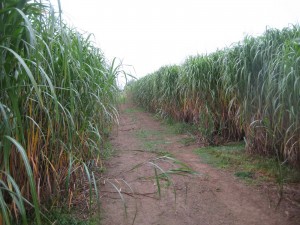Cultivating miscanthus for biomass production involves several key considerations. Here is a summary of growing miscanthus as a biomass crop:
1. Varieties: Choose appropriate miscanthus varieties suited to your local climate, soil conditions, and intended end-use. Common varieties include Miscanthus giganteus, Miscanthus sacchariflorus, and others.
2. Planting: Propagate miscanthus through rhizomes, plugs, or seeds. Spring and early summer are often preferred for planting. Adequate spacing between plants is crucial to allow for optimal growth.
3. Establishment: The initial year focuses on establishment. During this phase, irrigation, weed control, and proper fertilization are essential to support the growth of the young miscanthus plants.
4. Growth Cycle: Miscanthus follows a growth cycle of approximately three years for the first harvest and then an annual harvest thereafter. The crop is typically harvested in late winter or early spring, during the dormant season.
5. Maintenance: Regular maintenance includes weed control, especially during the establishment phase, and pruning to remove dead or senescent canes.
6. Soil and Nutrient Requirements: Miscanthus is adaptable to various soil types but thrives in well-drained, fertile soils. Soil testing and appropriate fertilization may be necessary to maintain optimal nutrient levels.
7. Pest and Disease Management: While miscanthus is generally pest-resistant, it may face occasional pest or disease challenges. Integrated pest management strategies can help mitigate these issues.
8. Sustainability: Miscanthus is known for its sustainability. Its deep root system enhances soil structure, reduces erosion, and sequesters carbon, contributing to improved environmental conditions.
9. Biomass Yield: Miscanthus exhibits impressive biomass yield, often surpassing other energy crops. It can be processed into pellets, chips, or used as a source for bioenergy, such as heat, electricity, and biofuels.
10. Bioeconomy and Bioproducts: Miscanthus biomass can be a valuable resource for the bioeconomy, providing feedstock for biobased products like bioplastics, biochemicals, and biofuels.
11. End Uses: The harvested miscanthus biomass is suitable for a range of applications, making it a versatile feedstock for bioenergy, biofuels, and various industrial processes.
12. Market Demand: Consider the market demand for miscanthus in your region or for your intended use, as this may influence your production scale.
Please share information, tools and resources related to growing miscanthus as a biomass crop


